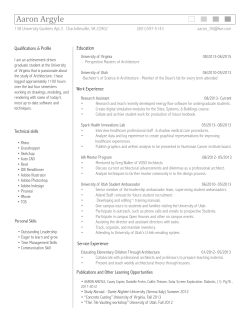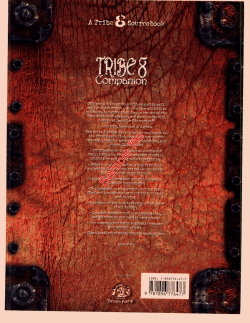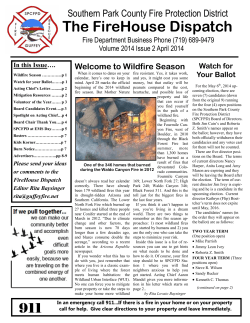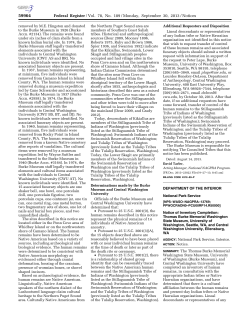
APPENDIX 1 - Issues Relating to the Orthography of the... and the Four Divisions of Levi
APPENDIX 1 - Issues Relating to the Orthography of the Twelve Tribes of Israel and the Four Divisions of Levi The Wilderness Encampment of the twelve tribes of Israel is described in the first three chapters of the Book of Numbers. A careful reading of these chapters gives us a sense of the orientation of the Encampment. Two notable features to be found within the organisational structure of the tribes of Israel, as set out at Numbers 2 and 3, are the double portion given to Joseph – represented by his sons Manasseh and Ephraim – and the reorientation of the tribe of Levi into four divisions, viz. Gershon, Kohath, Merari, and Aaron. As a result of this rearrangement, both Joseph and Levi are effectively removed from the tribal quorum, their places being assumed by their sons, and, in the case of Levi, ostensibly also by a great-grandson. Further to the four divisions of Levi, these were encamped around the tabernacle – the Hebrew – משכןin the Wilderness, and the tribe of Levi was not reckoned independently among the twelve tribes. As subsequent biblical history attests, the Levites did not receive any allocation of land following the conquest of Canaan. Instead, the tribe of Levi was apportioned territory among all twelve tribes, inhabiting 48 Levitical cities (Joshua 21:1-42; 1 Chronicles 6:54-81). Returning to Numbers 2, we are thus presented with the orientation of the twelve tribes, these forming the perimeter of the Encampment. In respect of this arrangement, the gematria sum of the twelve tribes comes to 3700, this value being dependent on two matters of orthographical choice. First, the name of Zebulun is spelt defective – – זבלוןwith the first vav, ו, omitted, thereby giving it a CV of 95. According to The Masorah of Biblia Hebraica Stuttgartensia, Zebulun is spelt three different ways in the Hebrew Bible, two of which have a CV of 95 – זבלוןand – זבולןand one which returns a CV of 101 – ( זבולון1998: 56). זבלוןhas been chosen on this occasion because it harmonises with the other names given in the Wilderness Encampment sharing the vav-nun, -ון, suffix, viz. Simeon ()שמעון, Gershon ()גרשון, and Aaron ( ;)אהרוןand because its CV of 95 brings the The spelling sum total for all twelve tribes to 3700, i.e. a multiple of 37. Second, the name of Benjamin is spelt plene – – בנימיןand has a CV of 162. The name Benjamin often omits the second yod, י, in its orthography in the Hebrew Bible, its CV thereby dropping to 152. In fact, the defective spelling is the more frequent, as evidenced by renowned Hebrew scholar James Barr in his book The Variable Spellings of the Hebrew Bible (1989: 162). The predominance of the defective spelling notwithstanding, the plene spelling of Benjamin has been chosen on this occasion in light of its role in bringing the gematria sum of the twelve tribes up to 3700. Numbers 3 then deals with the four divisions of the tribe of Levi, and their orientation at the centre of the Encampment. Their gematria sum comes to 1776. Two issues are critical at this juncture. The first concerns a single matter of orthographical choice, while the second concerns the four Levitical divisions themselves. First, in the Wilderness Encampment diagram, the name Aaron is spelt plene, i.e. אהרון. In the Masoretic Text of the Hebrew Bible, the name Aaron is always spelt defective, i.e. אהרן, with the vav, ו, omitted. The lemma version, however, is usually, though not always, written plene. There is strong evidence to suggest that the exclusive use of the defective spelling of Aaron in the Masoretic Text of the Torah is a result of a policy seeking orthographic uniformity on the part of the Masoretes. In many old Torah scrolls, for example, the name Aaron was spelt plene at Exodus 29:15, and details surrounding this issue have an interesting history. B. Barry Levy, in his Fixing God’s Torah, relates the canvassing of rabbinical thought on this matter by Yehudah Leib Saraval in the early th 17 century. Levy relates that: Having recalled that, during his youthful work as a scribe, he was taught to spell Aaron’s name plene ( )אהרוןin Exodus 29:15, despite the generally accepted masoretic rule that in the Torah it is always defective ()אהרן, Saraval sent letters to various communities to learn both how they spelled the word and how they decided … The collected views of Saraval’s respondents allowed him to retain the plene spelling of Aaron that he had copied in scrolls some forty years earlier and to discount Abulafia’s statement that it should be spelled defective throughout the Torah ( Masoret Seyag LaTorah, p. 2a). (2001: 23,4) The plene spelling of Aaron, though the minority reading today, is clearly valid from a textual standpoint. Its CV of 262 brings the sum for the four divisions of Levi up to 1776, i.e. a multiple of 37. Concerning the four Levitical divisions, three are named after the sons of Levi: Gershon, Kohath, and Merari. The fourth, and final, division is named after Aaron, who, according to the genealogies, was a great-grandson of Levi (1 Chronicles 6:1-3). At the east side of the tabernacle, facing its entrance, Moses encamped along with Aaron. Yet, as subsequent biblical history attests, it was Aaron who appears to have had the preeminence in this situation. According to Scripture, Aaron was the older brother of Moses (Exodus 7:7). It was from Aaron that the official priesthood and the legitimate high priest in Israel descended (Exodus 28-29; Leviticus 8-9). Indeed, the name of Aaron was chosen to represent the tribe of Levi in the matter concerning the legitimate priestly office in Israel (Numbers 17:3). By way of contrast – the disputed tradition related at Judges 18:30 notwithstanding, wherein an illegitimate Mosaic priesthood was installed in the recently acquired territory and city of Dan in northern Israel – Moses left no lineage of note, and his progeny disappear from the biblical narrative. The most convincing evidence for the naming of this fourth division of Levi after Aaron is, however, to be found in Joshua 21. In this post-conquest chapter, the 48 Levitical cities are apportioned to the four Levitical divisions of Aaron (verse 4, thirteen cities), Kohath (verse 5, ten cities), Gershon (verse 6, thirteen cities), and Merari (verse 7, twelve cities), thus confirming Aaron as the fourth division of the tribe of Levi. A summary of the facts attests to the fourfold division of the tribe of Levi, these being stationed at the centre of the Wilderness Encampment, with the division of Aaron facing the entrance to the tabernacle. Disposed around this fourfold Levitical centre, the twelve tribes of Israel formed the Encampment perimeter. In the orthography represented in the Wilderness Encampment diagram, and pertaining to the twelve tribes forming the perimeter, the tribe of Zebulun is spelt defectively, whereas the tribe of Benjamin is spelt plene. Pertaining to the Levitical divisions at the centre of the Encampment, the division of Aaron is spelt plene. While it is admitted that these choices in orthography might detract in some way from the ensuing numerical and gematrical statistics, they remain nonetheless permissible according to the Hebrew orthography of the Bible. In this respect, it is maintained that the numerical and gematrical statistics be allowed to speak for themselves. As a concluding remark, it is worth noting that the Wilderness Encampment sum for the four divisions of Levi comes to 1776 = 37 x 48. As mentioned earlier, and subsequent to the conquest of Canaan, the Levites received 48 Levitical cities within the territories of the twelve tribes. References Barr, James. The Variable Spellings of the Hebrew Bible: The Schweich Lectures 1986. New York: Oxford University Press, 1989. Kelley, Page H., Daniel S. Mynatt, and Timothy G. Crawford. The Masorah of Biblia Hebraica Stuttgartensia: Introduction and Annotated Glossary . Grand Rapids: Wm. B. Eerdmans, 1998. Levy, B. Barry. Fixing God’s Torah: The Accuracy of the Hebrew Bible Text in Jewish Law. New York: Oxford University Press, 2001.
© Copyright 2025





















